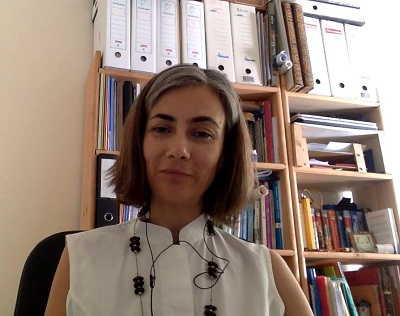There are now 24 states in the U.S. with medical marijuana laws. But some states are very strict with their growing regulations, and many of them severely limit what medical growers can and can't do within the confines of their growroom. Restraints on plant numbers, canopy size and even grow lamps are just a few factors confronting patients and caregivers.
Still, most growers simply cannot grow hundreds of plants due to their own limitations on space. So how exactly are we supposed to grow excellent medicine (and a lot of it), while still following the guidelines and playing by the book? Well, rest easy, the answers aren’t that difficult after all.
Here’s a simple guide towards maximizing your yields indoors—even when growing with less plants, fewer lights and in a smaller space.
Sound Grow Theory
Obviously, growing outdoors helps immensely when battling restrictive regulations of medical marijuana laws. Despite restrictions placed on a grower, when growing outside, you can grow towering plants, or more accurately trees, that will offer patients huge yields of quality herb. With all the power of the sun (free light!), the depths of Earth’s natural soils and the ceiling-less space, bountiful air and effervescent rains of the sky, outdoor growers have less to worry about than your average indoor gardener.
In order to get the same yields indoors as you would outside in nature, a gardener needs to replicate several features of an outdoor garden in their indoor growroom. The goal is to be able to grow plants of a large size in order to provide outdoor-sized yields—but without compromising the quality of your herb.
Quality is often compromised by over-charging indoor gardens in a variety of ways. Over-feeding, over-heating and over-lighting are some common problems that lead to diminishing quality of indoor marijuana. It is important to remember that plants prefer simple gardens that allow them to naturally do their work. And when adding the superb types of genetics that we have today to indoor gardens, the potential of the plants alone to produce high-quality cannabis is at an all-time high. They need little help from us to do it!
Our focus right now, however, is in trying to replicate the size of outdoor plants indoors. It is also important to keep in mind that it is usually impossible to completely recreate outdoor gardens inside due to parameter restraints such as height of ceilings, overall room volume and size of the flower beds. Still, that in no way means indoor gardens cannot maximize potential and reap huge yields of quality medicine.
To start, we can maximize root space and growth in order to grow plants large enough inside to maximize their indoor yield potential. While these sizes may not compare to their outdoor size and potential, by employing a few simple gardening techniques, patients and caregivers will reward themselves with flowing, lush plants.
Remember, by keeping plants happy and healthy, growers can maximize a garden’s potential.
The Root Zone
In order to grow large indoor plants, it is essential to understand the processes that occur within the root zone and the role roots play in a plant’s development.
First, it is important to know that everything that occurs at the root level is highly chemical. The roots grow billions of tiny, highly sensitive hairs that absorb moisture and minerals on a molecular level. This is how a plant gets 95 percent of its water and nutrients; therefore, the root zone must be properly maintained.
After absorbing water and nutrients, roots send this food up through the stalk and stems, into the plant itself, for final processing. These ingredients are used within the leaves, in conjunction with sunlight, to create sugars the plant uses as food. This process happens during photosynthesis, and once the sugars are created, all excess food is sent back down to the roots for storage. This is another major reason a good root structure is integral for good plant growth. The larger the root system, the more storage space the plant has for excess food. When extra energy is needed—for instance during flowering stages—the plant will have an extra supply to draw from, making yields and quality that much better.
For these reasons, plant yield is directly proportional to root size. However, when growing indoors there are other important considerations that need to be balanced with this fact. Because many growrooms are bound by height restrictions, many indoor gardeners prefer to keep plants short and stocky, rather than tall and thin. There is another good reason for doing this as well; shorter plants require much less energy for transporting water, nutrients and sugars throughout the plant. It is much easier for root systems to send water and nutrients up a shorter plant stalk than it is a tall one, and this saved energy can be used for the plant in more vital processes, such as producing more resin or denser flowers.
 Squat, bushier plants yield better indoors.
Squat, bushier plants yield better indoors.
So then, how do you grow a bigger root system while still keeping plants squat? That’s simple; instead of growing plants out of a deep pot, grow them out of shallow beds that are wider laterally. Giving your root zone lots of horizontal space is just as efficient in preventing root bound plants and gives another added benefit—it helps promote bushy plants by allowing branches to grow further outward rather than upward. Because plants have a natural tendency to only grow as far outward as is their root zone diameter underground, having shallow yet wide beds of medium is an excellent way to achieve short, bush-like plant growth indoors.
Perhaps one of the best methods for creating this type of root system is by using grow bags instead of rigid pots. Grow bags come in a variety of sizes and are easily adjustable for a gardener's desired root zone parameters. Large grow bags (five to 10 gallon) can be rolled down to create shallow root beds while also allowing for a fairly wide root system to develop. The shallow bags create shallow root depth which signals to the plant to remain short, while the long widths of the bag signal the branches to grow farther outward.
The Art of T’s: Topping & Trellising
Of course, there is more to growing large, productive plants indoors than just the size of your garden bed. In conjunction with creating a proper root zone, smart indoor gardeners will also incorporate the art of “tying off,” or trellising. A trellis is a framework or structure of latticework used as a support for growing plants. The trellis is usually constructed out of crossed strips of wood or bamboo sticks that are anchored in the growing bed and that form a vertical and lateral support frame in which a plant can grow and expand onto.
The goal of this technique is to enlarge each plant’s canopy size, while also creating numerous top shoots, or colas, that can help produce larger yields. The technique also helps spread out limbs or branches of each plant, allowing light to better penetrate the top canopy and aid lower buds in their development.
 A product of good topping with many top colas.
A product of good topping with many top colas.
Two additional techniques should also be incorporated into this system to encourage the plant to bush. The first is known by a variety of names—topping, pinching-off and FIMing are all terms for a similar technique that stimulates lower growth and cause a plant’s middle-to-top shoots to grow bigger and stronger.
While each on of these techniques differs slightly in application, their effects are largely the same. Topping, pinching and the FIM technique are largely the same and simply involve cutting or pinching off a plant’s upper or top shoot (branch tip) from the main stem. This will send a signal to the rest of the plant to begin growing out more at lower internodes, which in turn creates more top or main flowers.
To top or pinch off the plant’s main branch tip, snip it off just below the last set of leaves. To FIM a plant’s top, cut the tip slightly higher, leaving about 20 percent of frayed leaf. The FIM technique is said to produce or enhance many more lower off-shoots than does standard topping, which usually only bolsters the two lower branches just below the cut. When many tops are pinched back or FIMed extensive growth can be seen. Thus, it is important to remember that this needs to be done very early in the plant’s life and done continually as clones or seedlings continue to grow in their vegetative stage.
A second added technique for this system of growing is called supercropping or bending plants. This technique achieves a similar outcome by bending the top or main shoot of a plant at an early point in vegetative growth. The bend needs to be severe and permanent but still done without severing the shoot completely. Using a hand, growers bend and “roll over” the stem with their fingers to create a 90-degree angle, or bend, at the top of the plant that will eventually harden off. This also encourages vigorous growth in the branches below by affecting the flow of hormones throughout the plant.
As plants begin to grow throughout the vegetative cycle and into the flowering stage, the vigorous growth of top and side shoots resulting from topping techniques will need to be controlled. This is where trellising comes into play. Beginning a week or two after transplanting clones or seedlings some sort of trellis or latticework should begin being constructed at each plant site. Once plants are topped, branch arms will begin jutting out at all angles searching for light. These shoots need to be trained by loosely tying them to a structure or framework that encircles the plant. These frames can be made out of any sterile, sturdy material and should be anchored in each plant’s container, near the edges so as not to interfere with the root system.
 Shallow grow bed and trellis work.
Shallow grow bed and trellis work.
The aim for indoor gardeners is to spread out the top and side branches by pulling them apart and attaching them to the trellis, giving them their own pathway to grow up toward the light. Trellises also serve as much needed support for the plant during flowering stages when the plant needs to sustain the burdening weight of buds. Having this support also enables the plant to use less energy of its own, thereby helping increase yields when that energy is diverted to flower (and resin) production.
All About Auxins
Auxins are complex plant hormones that aid in the development of leaf buds and leaves. Auxins can stimulate plant cells to grow longer, and this can be especially true in areas of high auxin concentration, such as root tips and shoot tips.
However, auxins also have the ability to inhibit growth on the lower or shorter shoots surrounding it. This is known as apical dominance. Once the top shoot begins growing up and away from the lower shoots, or if the terminal bud is removed altogether, these effects are lessened and the shorter shoots begin growing again.
Additionally, when a plant’s dominant shoot is pinched off, the auxins left over in the shoot (if any) and those headed towards it become redistributed to surrounding shoots, forcing them to grow stronger. This same effect is also true when FIMing, supercropping or bending the top shoots.
Lighting & Internode Lengths
One last facet to maximizing indoor yields deals with light type and the distances that light is kept from garden canopies. As mentioned earlier, mimicking nature’s outdoor conditions is the goal for indoor growers and that applies to light as well. Unfortunately, nothing manmade can equal the power and efficiency of the sun, but that does not mean we can’t come close.
For starters, for indoor growers to maximize yields and their plants’ genetic potential, we need to place heavy importance on the value of spectrum. Just as the sun offers plants a full spectrum of light, so too should our indoor lights. Good spectrum allows plants to grow as efficiently as possible.
Currently, some of the best lamps available to growers are high-intensity discharge (HID) lamps, which come as either high-pressure sodium (HPS) or metal halide (MH) bulbs. HID provide strong light that can penetrate garden canopies and deliver more light to the middle tier of a garden. However, when it comes to spectrum, artificial light from HPS and MH bulbs can still be improved upon.
Newer bulb products that are specially tailored to individual frequencies (or wavelengths) of spectrum are becoming more and more popular among indoor growers. These bulbs can be used with specialized light delivery systems that not only maximize light distribution but also keep heat down by rotating the bulbs at quicker speed than standard light movers. This allows the lamps to be placed extremely close to garden plants. When one or more of these bulbs are combined in a lighting system, an even fuller spectrum can be achieved. (For more info visit SunPulseLamps.com[1]).
Unfortunately, when focusing on large yields and creating efficient, healthy gardens, some alluring products are not right for such objectives. For instance, LED lights, which do cut down on power consumption and heat byproduct, are not viable for those growers shooting for larger yields or healthy plants.
Once a garden has the proper lighting and spectrum to allow plants to function as efficiently as possible, the focus then turns to how best to deliver the limited power of our artificial lighting. Positioning lamps as close to the plants as possible—without creating heat burn—is the goal. Anything within one foot (12 inches) of the garden canopy is ideal, however, growers must use caution in determining the heat output of their lamps. Too much heat is very bad for the plants as is any plant tops that might actually touch the lamps. Most indoor growers usually use some form of light cooling system in order to get their lights closer to their garden.
Keeping lamps close to plants is important because it helps keep shorter internode lengths on plants. Internode length is the distance between one leaf shoot and the next. Keeping these lengths shorter results in a more compact plant and helps promote a fuller shape, which is essential when growing squat plants. Keeping internode lengths at a minimum also improves yields, as shorter plants will then use less energy to transport food and water throughout the plant. All energy saved will be stored in the roots and used later during the flowering stage.
 Excellent node stacking and short internode lengths.
Excellent node stacking and short internode lengths.
During the vegetative phase and even in nurseries where clones and seedlings are being raised, indoor growers opt for whiter light, which helps keeps internode lengths short and prevents young plants from stretching. MH and even fluorescent bulbs are excellent for helping maintain shorter plants. HPS lights have more red spectrum in them, which is why they are primarily reserved for the flowering stage. LED lamps that use only red and blue frequencies are dangerous because too much red spectrum will activate plants’ “far red” phytochrome that send stretch signals to internode cells causing plants to grow taller.
 Keep strong lighting close to plant canopy.
Keep strong lighting close to plant canopy.
With the right lighting and positioning of lamps, indoor growers can keep plants lush and thick without bursting through the ceiling. As plants get larger, relying on a trellis to give them support and proper room for growth and light consumption will help yields increase, while still keeping plants healthy and happy… and in the end, that makes for healthy and happy growers and patients as well.
Thanks for reading everyone and remember: Grow… And help the world grow, too!
Got questions? Email ‘em over to Nico at This email address is being protected from spambots. You need JavaScript enabled to view it.[2] and be sure to put “Nico’s Nuggets” in the subject line!
Latest
Coronavirus Strikes Massachusetts Cannabis Company Employees
Reassessing the Essential: Cannabis in the Time of a Pandemic
5 Reasons To Try Aspen Valley CBG Flower (30% Off)
High Times Cannabis Cups Go Virtual In Wake Of Coronavirus Pandemic
Drug Enforcement Administration Proposes Plan To Expand Cannabis Research
Ghana Legalizes Cannabis For Medicinal And Industrial Uses
The cheapest legal weed in Canada: Discover these cannabis ‘value brands’
Cannabis and coronavirus: Here’s what you need to know
cannabis designs
The Best Of
WHO Rules CBD Should Not Be a Scheduled Drug

Dr Cristina Sanchez PhD video interview on medical marijuana and cancer

Biochemist Dennis Hill interview; Cannabis oil as a cure for cancer.

The unofficial World Record holder for cannabis smoking part 1





